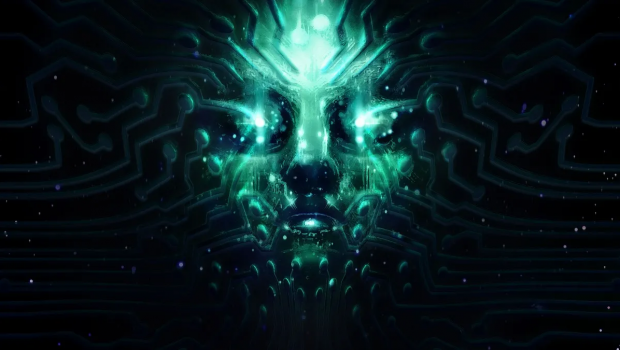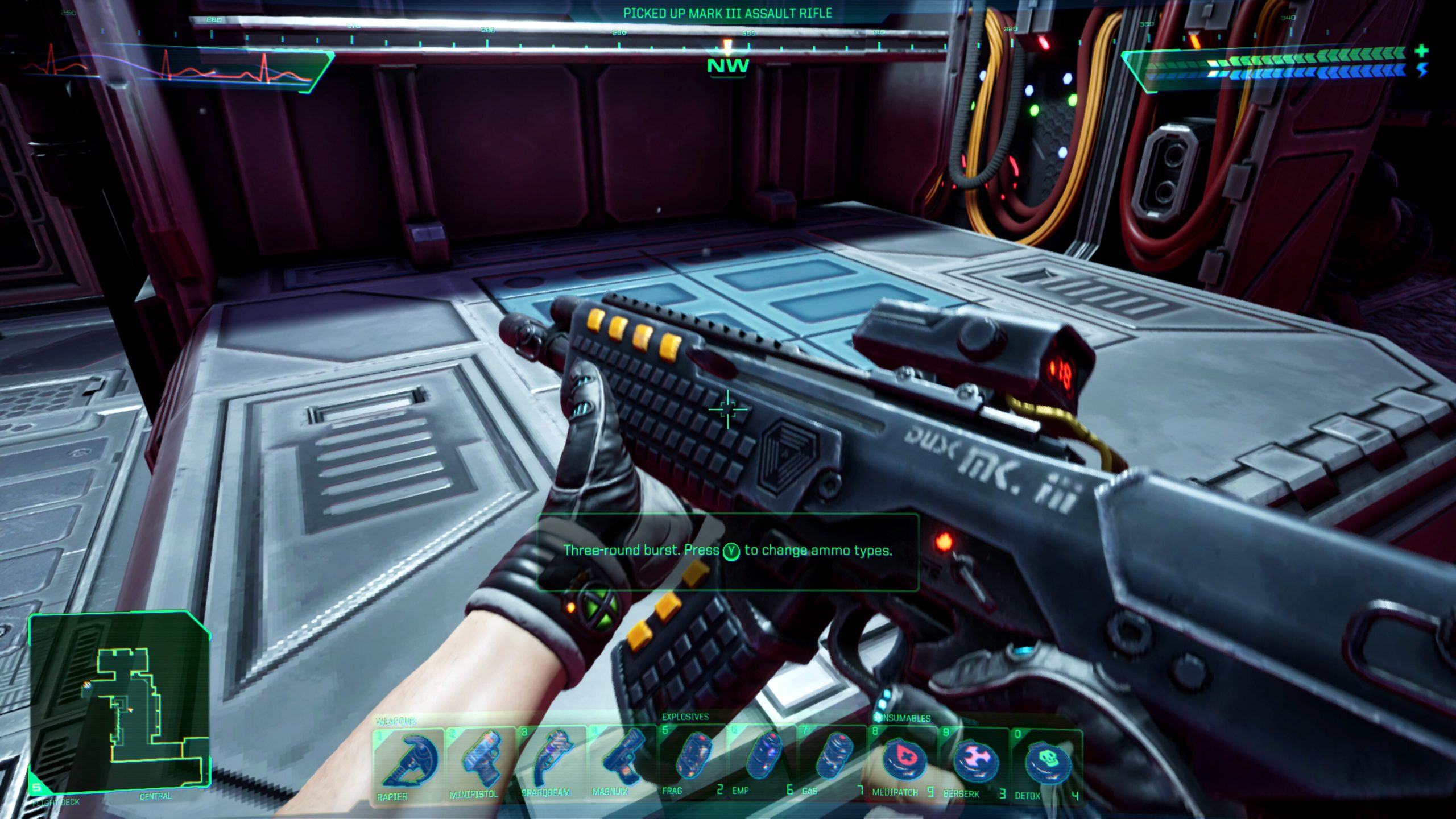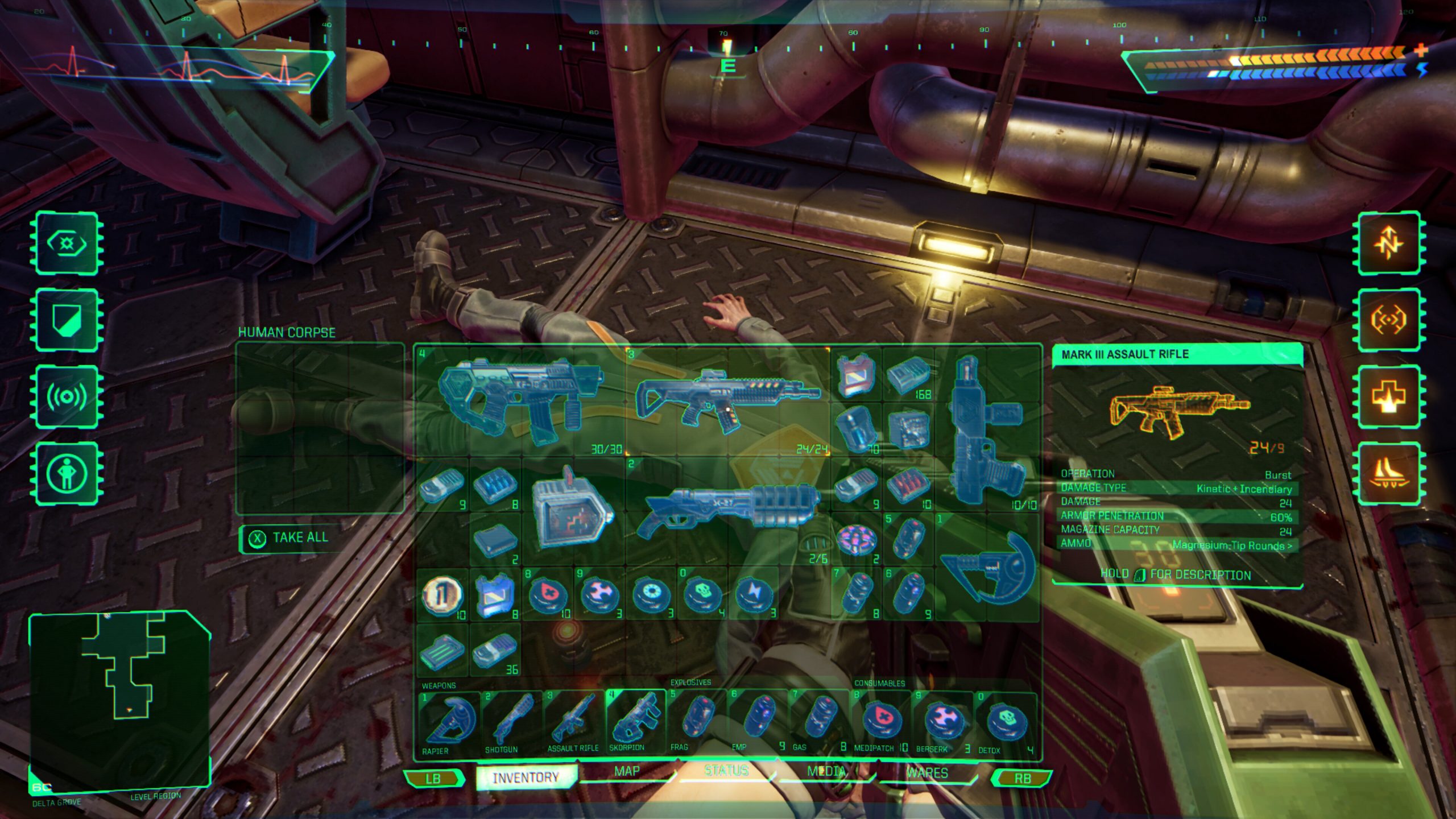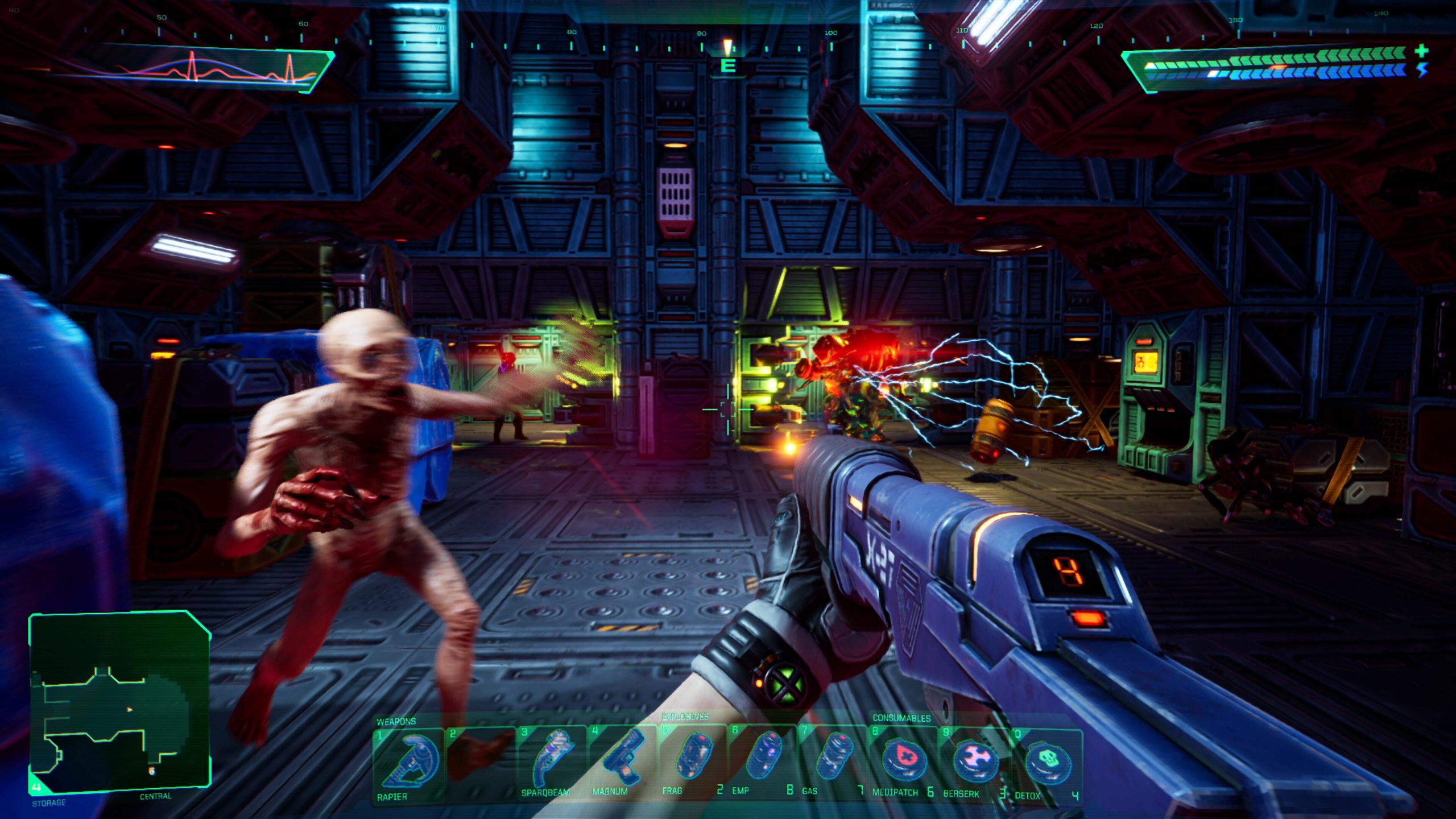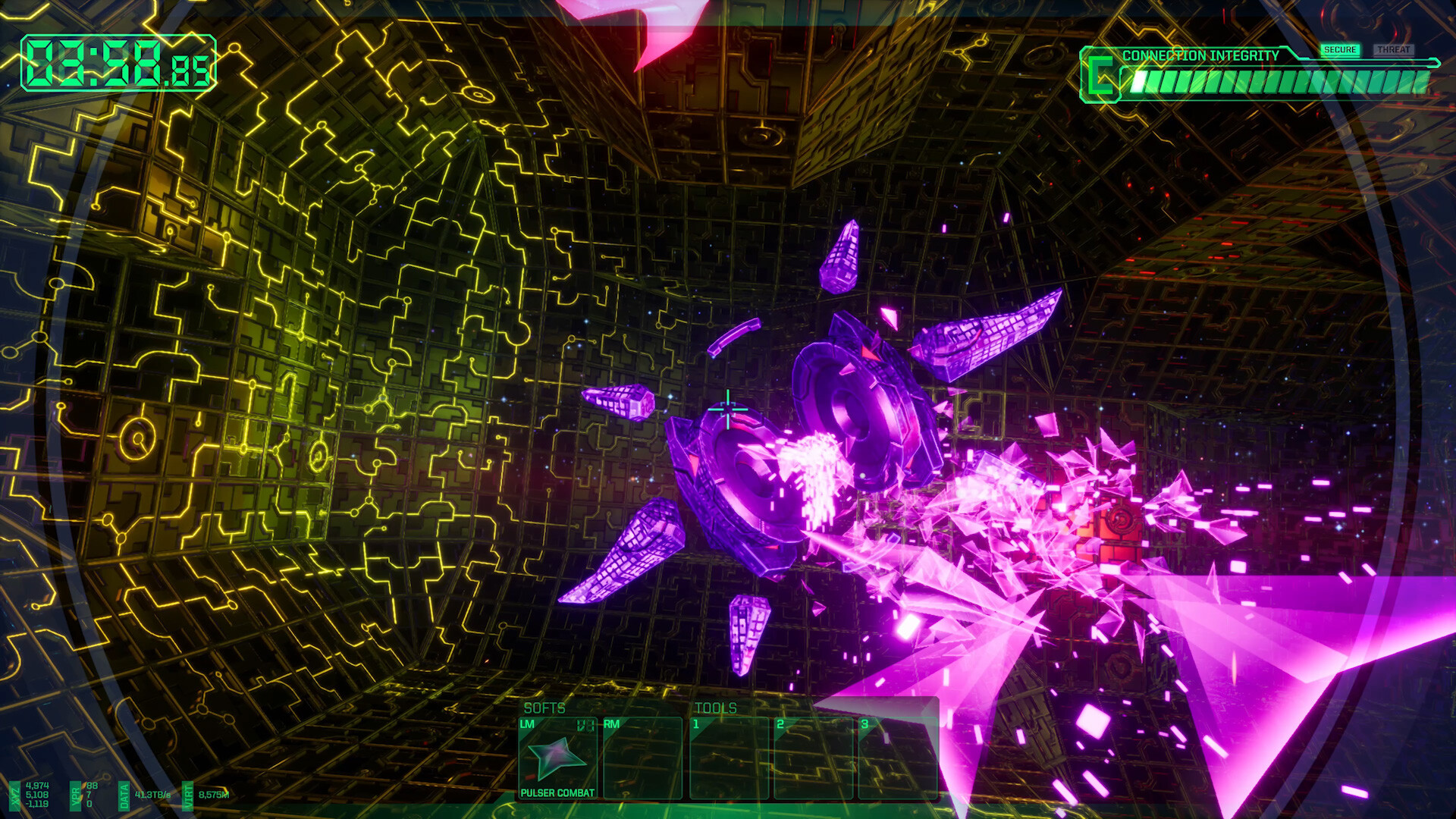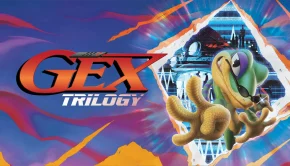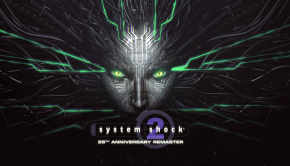System Shock XSX Review
Summary: A solid console port for an absolute masterclass in how to remake a classic.
4.5
Hack the Planet
System Shock is a game that deserved a remake; a pioneer of the immersive sim genre, this hellish cyberpunk tale of a hacker stuck on a space station governed by a murderous AI was an incredible feat back in 1994. Although not perfect, it planted the seeds for what would grow into one of the most exciting and complex gaming sub-genres. Without System Shock, there would be no Deus Ex, no Dishonored, and no Thief. There also wouldn’t be a little game called BioShock. It’s that important.
Then to see that Night Dive Studios, the god-kings of videogame preservation, were behind it, well, It’s just proof that in a year of awful news for the gaming industry, we can have nice things, and occasionally, they come to consoles, too. (Though unfortunately not Nintendo’s… yet)
In their typical light-touch style, which has served them so well through their previous projects like the Quake and Turok ports, Night Dive has completely nailed what made the original such an instant classic while adding necessary quality-of-life improvements and sanding down some of its rougher edges to make the whole experience still feel as challenging as it did in 1994 but far more manageable.
System Shock transports players to a dystopian cyberpunk future, where corporations own countries, and hacking can do far more than land you in trouble with R*. After being caught trying to break into the systems of the shady TriOptimum corp, our protagonist (who can now be male or female in the console version) is offered a deal where they won’t rot in a cell for the rest of their life, and will be given the military grade implants they were trying to hijack in the first place, if they pull off a job to sabotage a space station by removing the ethical locks placed on the sentient AI that controls the place.
While our hacker is recovering from surgery on the station after a job well done. The AI, SHODAN (you may have heard of them), has gone absolutely cuckoo and decided to kill, maim, infect, and mutilate, creating a maze of twisting corridors full of mutants, cyborgs, and corpses.
Thus, it’s up to you to escape the Citadel and shut down SHODAN before she can enact her grander plans for mankind, which are uh… not good.
For those who remember the original, the first thing you’ll notice is that the opening is completely different. Rather than just a cut scene, you are put in the protagonist’s shoes as they try to hack into TriOptimum’s systems before a futuristic SWAT team busts in and drags you away. To then wake up on the citadel.
It’s a labyrinthine structure that was a feat of futuristic-level design back in 1994, thanks to its multi-tiered levels. Although some 30 years later, ladders may no longer be a source of excitement, the twisting, sprawling industrial landscape still is; although not particularly practical or realistic, the design of the Citadel works from a thematic and gameplay sense as it piles on the sense of being caught in the web of a maniacal mechanical spider that likes to play with its food.
What Night Dive excels at is keeping the tone and feel of a game consistent with its original version while providing subtle quality-of-life improvements that modern audiences expect or just adding an extra layer of polish to make the game shine even more (See: Shadowman’s twin-stick aiming; it’s a literal game changer).
Although the System Shock remake can still be incredibly uncompromising when it wants to be, certain tweaks have been added that make it more manageable, most notably the inclusion of BioShock-style respawn pods that allow you to return to the world with all your progress intact. Once you’ve finally got them online at least, I’d still recommend saving regularly, especially during the game’s opening stages, whenever you arrive at a new floor where the system isn’t on yet, or during boss fights when the pods are shut down, let’s just say the system, though useful, is not very reliable (on purpose) and there’s nothing worse than getting beaten unconscious and then dragged off and plugged into some mechanical monstrosity so you can better serve SHODAN only to find you hadn’t saved for an hour.
Some other more subtle tweaks make you feel more present in the world, such as new animations for picking and listening to audio logs and the excellent way you interact with the vending machines, trash compactors, and patch panels within the game world.
Some features were also added from System Shock 2, most notably the improved inventory system. This system makes sorting through your stash of energy drinks, bullets, and health patches much easier and makes the game feel slightly more modern.
The sections where you’re floating through cyberspace have also been overhauled to be much faster, more fluid, and less confusing. The sections now feel more like Lawn Mower Man if it were directed by Tetsuya Mizuguchi than a poor man’s Tron, turning what used to feel like a necessary but dull part of the game into something I actively looked forward to.
It also has the kind of customizable gameplay options that I wish were industry standard, as every part of the experience, from combat to navigation to puzzles, can be tweaked to a level you are comfortable with. Hate getting gunned down by respawning cyborgs? Turn the combat level down, and you’ll be wading through scrap; if you love a good brainteaser, the kind you need a pad and pen to figure out?: simply jack up the puzzle difficulty. Are you finding the station a little too difficult to navigate (even with the map)? slide navigation down to easy, and you get modern signposting and waypoints.
This results in your mileage varying considerably when you’re playing the game. If you set everything to easy, you can practically speed run it for about six hours, but if you whack everything on hard it can take upwards of 30 hours to see and do everything needed to leave the citadel.
Combat is fairly straightforward but surprisingly tense. Though lots of the monstrosities onboard the citadel are fairly dum if they spot you, the buggers will happily chase you through the ship and murder you as soon as they get in range. One mutant wildly swinging at you is manageable; a pack of them, well, you may as well say goodbye to those last few rounds or get ready to load your last save because the chances of you getting out alive are slim.
Though your chances of survival are greatly improved once you get access to energy weapons and shields, the energy to run them, like everything on the citadel, is a precious resource. Like someone who plugs half a dozen gadgets into their car’s cigarette lighter socket, if you don’t keep an eye on it, your battery is soon going to be flat as a pancake.
The presentation is clever, too. It’s a big step up from the 1994 original but constructed in such a way as to make the game loom and feel like a classic immersive sim from the late 90s that’s had a ray tracing and upscaling mod added to it., sitting somewhere between Deus Ex and System Shock 2. The only thing that sticks out a little is the monsters, weirdly because they look too good compared to the environments.
The console port is also solid, running on Series X at what appears to be a consistent 4k60, and includes all the little tweaks and improvements the PC version has had since it released last year, including letting you skip the cut scene before the game-over screen, which is useful since you’ll be seeing it a lot.
The controls and interface have also been converted well to consoles; everything feels responsive and slick. However, quickly swapping between your guns and consumables takes longer since you have to scroll across the selection bar with the D-pad instead of just pressing a number key.
Final Thoughts
System Shock (2023) is an exceptionally crafted remake made by a dev at the top of their game who clearly understands why the original is so beloved while knowing exactly what to adjust to make it more palatable for modern audiences.
It successfully recaptures the feel, tone, and challenge of the pioneering immersive sim while expanding and changing the parts that either didn’t age well or were a sticking point to begin with.
Fans of the original will absolutely adore it, while those who have always wondered what all the fuss was about have absolutely no excuse. It’s simply the best way to play one of the best immersive sims ever.


